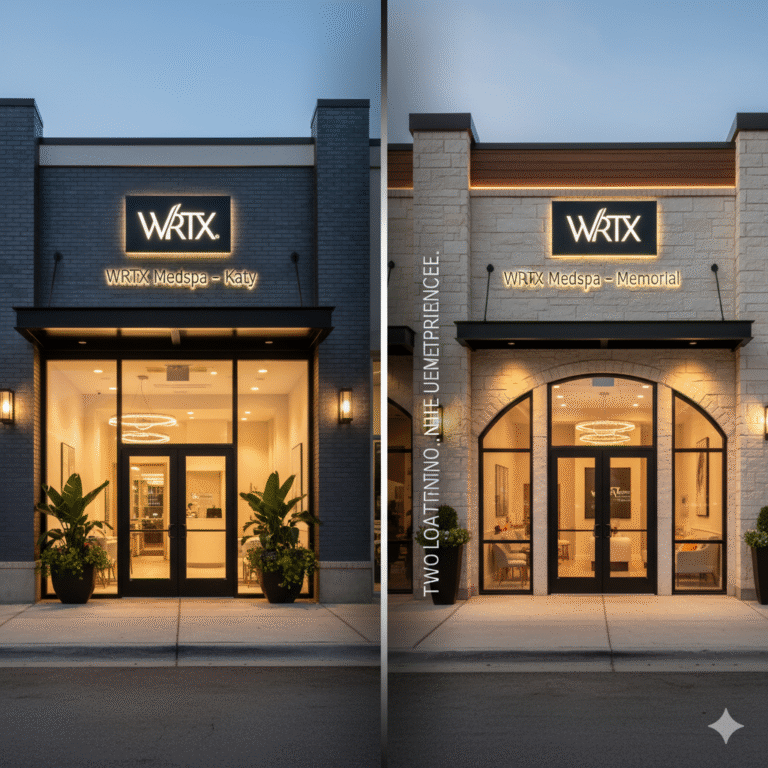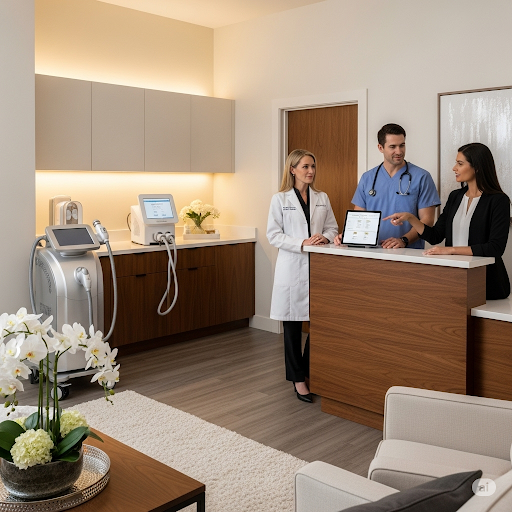The Allure and the Abyss
You’ve done it. You’ve built a successful, profitable medspa. Your books are in the black, your team is strong, and your appointment calendar is consistently full. The natural, exhilarating thought arrives: It’s time to scale. Let’s open a second location.
This thought is both the sign of a great achievement and a potential trap. Scaling a service-based business, especially one as personal and operationally complex as a medspa, is not simply a matter of copying and pasting your success. It’s a fundamental test of your systems, your leadership, and your financial resilience.
A second location can be a powerful engine for growth, building brand dominance, and creating new revenue streams. However, it also multiplies your problems. A minor issue at one location becomes a major, duplicated issue at two. The owner’s role shifts dramatically from hands-on operator to strategic manager, a transition many founders find challenging.
This guide isn’t meant to discourage you. It’s meant to equip you. We’ll walk through the critical, non-negotiable factors you must assess before signing a lease on that new space. This is about moving forward with confidence, not just hope.
Part 1: The Prerequisite: Is Your First Location Truly “Scalable Ready”?
The single biggest mistake is scaling a business that seems successful but is actually held together by the owner’s sheer force of will. If the first location isn’t a well-oiled machine, the second will be a money pit. Ask yourself these questions:
1. Is Your Profit Strong and Consistent?
- Look Beyond Revenue: High revenue is meaningless if your net profit is thin. A second location will have startup costs and will likely operate at a loss for the first several months. You need the profit from Location A to fund the launch of Location B without jeopardizing the health of your original business.
- Actionable Check: Review your P&L statements from the last 12 months. Is your net profit consistently at or above 15-20%? Do you have a clear understanding of your unit economics (e.g., profit per injectable treatment, profit per laser hour)? If not, optimize your first location before even thinking about expansion.
2. Are Your Systems Documented and “Dummy-Proof”?
Could you leave for a three-month vacation and have your medspa run perfectly without you? If the answer is no, you are not ready to scale.
- Actionable Check: Do you have documented Standard Operating Procedures (SOPs) for:
- Clinical Protocols: Consultation forms, treatment protocols, consent processes, emergency response.
- Front Desk Operations: Phone scripts, booking procedures, checkout process, handling complaints.
- Marketing: Social media calendar, email marketing sequences, review generation process.
- Financials: Daily closing procedures, inventory ordering, budget management.
If these systems only exist in your head or a key employee’s head, they cannot be replicated. Document everything now.
3. Do You Have a Leadership Team, Not Just Employees?
You cannot be in two places at once. Your first location needs a leader—a manager, a head nurse, a director of operations—who you trust implicitly to run the day-to-day.
- Actionable Check: Identify who would run Location A if you were focused on Location B. Have you trained them? Do they have the authority to make decisions? Are they invested in the business’s success? If you don’t have this person, your expansion will pull you away from your core business, causing both locations to suffer.
Part 2: The Financial Deep Dive: Beyond the Initial Lease Signing
Underestimating costs is the fastest way to sink both locations. Your financial modeling must be exhaustive and conservative.
2.1 The Real Startup Costs
- Build-Out and Design: This is often the largest and most underestimated cost. Medical build-outs require specific plumbing, electrical, and compliance with the Americans with Disabilities Act (ADA). Get multiple detailed quotes.
- Equipment: Will you purchase new, lease, or transfer underutilized equipment from your first location? Factor in the cost of backup devices.
- Inventory: Stocking a full suite of skincare, injectables, and consumables for a new location requires a significant upfront investment.
- Marketing Launch Budget: You cannot rely on organic growth. You need a dedicated budget for a grand opening campaign, targeted digital ads in the new market, and community outreach. A common rule of thumb is to set aside 10-15% of your projected first-year revenue for marketing.
- The Runway (The Most Important Number): How long can you cover both locations’ operating expenses if Location B generates zero revenue? You should have enough cash reserves to cover at least 6-9 months of all fixed costs for the new location (rent, utilities, staff salaries) without relying on profit from Location A.
2.2 The Operational Cost Structure
Your cost structure will not be identical. The new location will have:
- Higher Labor Costs: You will likely need to hire at higher rates to attract talent in a new market.
- Higher Marketing Costs: Acquiring a new client in an unknown area is more expensive than retaining one in your established base.
- Potential for Lower Initial Utilization: It will take time to fill the schedule, meaning your cost-per-treatment will be high initially.
Part 3: The Model: To Clone or to Adapt?
You have a successful brand. Do you create an exact replica of your first location or adapt to the new market?
3.1 The “Clone” Model
- Pros: Consistency is easier. Marketing materials, training, and SOPs are identical. A client from one location can easily visit the other.
- Cons: It assumes the new demographic is identical to the first. What if the new area has a different age demographic, income level, or aesthetic preferences?
3.2 The “Adapt” Model
- Pros: Allows you to tailor services and marketing to the new community. You might emphasize medical weight loss in one area and anti-aging in another.
- Cons: More complex to manage. Requires deep market research before launch.
The Verdict: The ideal approach is a hybrid. Maintain core brand identity, service quality, and operational standards (the “clone”) but be prepared to adapt your service mix and marketing messaging based on the new location’s demographics.
Part 4: The People Problem: Your Biggest Challenge
Your systems can be perfect, but without the right team, the new location will fail.
4.1 Staffing Strategy
- The Anchor Employee: Consider transferring your most trusted, culture-carrier employee to the new location for the first 3-6 months. They will instill your standards and train new hires. This is a temporary but crucial investment.
- Hiring for Culture First: A new hire can be trained on protocols, but they can’t be trained on your culture. Hire for attitude, empathy, and alignment with your core values. You can teach skills; you can’t teach character.
- The Medical Director: You will need a medical director for the new location. Your current MD may not be licensed to practice in the new state or may not have the capacity to oversee two locations. Start this search early, as credentialing takes time.
4.2 The Leadership Transition
- Your Role Will Change: You are no longer a clinic manager; you are a CEO. Your focus must shift from day-to-day operations to strategy, financial oversight, and developing your leaders at both locations. This is a difficult but necessary transition. If you can’t let go of control, you will create a bottleneck that stifles growth.
Part 5: Location, Location, Location (But Not Just the Address)
Choosing the right spot is more than just finding an affordable lease.
- Demographic Analysis: Use tools like the ESRI Tapestry data or census data to analyze the population within a 3-5 mile radius. Does the income, age, and education level match your ideal client avatar?
- Competitive Analysis: Who else is there? Map out every competing medspa, dermatologist, and plastic surgeon. What are they offering? What are their prices? Is the market oversaturated, or is there a gap you can fill?
- Visibility and Accessibility: Is it easy to find? Is there ample parking? Is it in a high-traffic retail or professional area? A slightly cheaper lease in a hard-to-find location is a false economy.
- Foot Traffic vs. Destination: Are you relying on walk-in traffic (more important for retail skincare) or are you a destination for scheduled appointments? This will dictate the importance of visibility.
To Scale or Not to Scale?
Opening a second location is not the only path to growth. Before you commit, consider the alternatives:
- Optimize Your Current Location: Can you add more treatment rooms? Extend hours? Add high-demand services (like medical weight loss or hormone therapy) to increase revenue per existing client?
- Acquire a Competitor: Sometimes, buying an existing practice in a new market is less risky and faster than building from the ground up.
- Pause and Strengthen: There is no shame in deciding that now is not the right time. Building a resilient, profitable single location is a massive success in itself.
If you’ve done the deep dive and the numbers and systems support it, scaling to a second location can be the most rewarding step in your entrepreneurial journey. It solidifies your brand, creates new opportunities for your team, and builds significant enterprise value.
Move forward not because you can, but because you are prepared. Let your first location’s robust success fund and guide a deliberate, strategic expansion. Do that, and your second location won’t be a gamble; it will be an investment.


